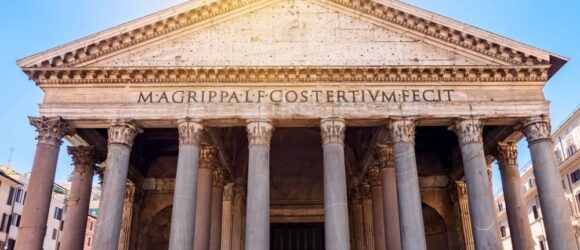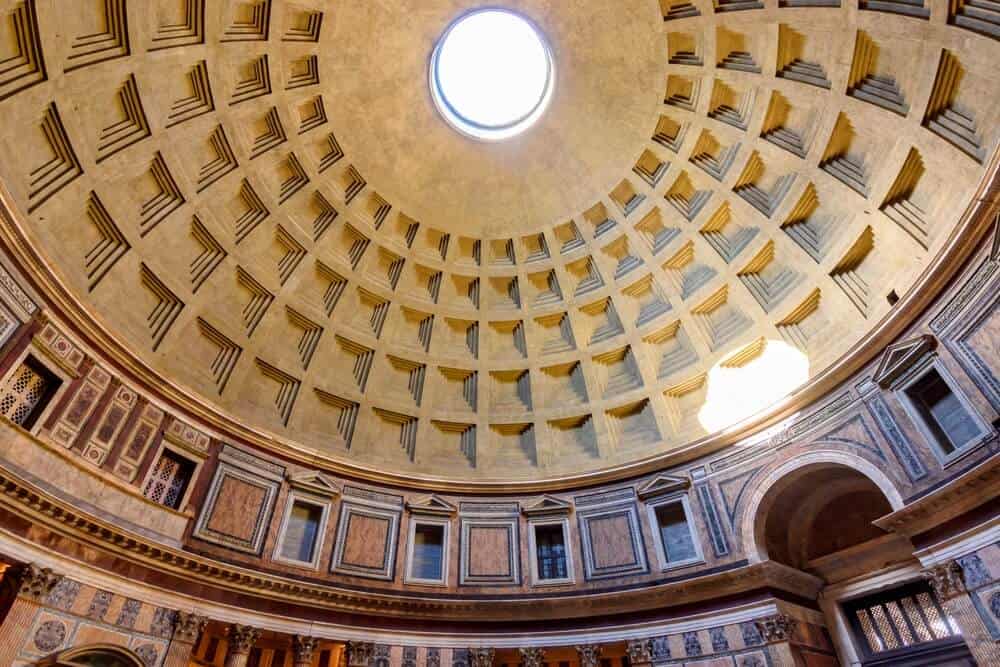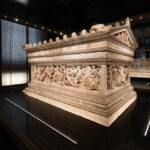A Complete Guide to The Pantheon: A Must-See Mausoleum

The Pantheon, located in the heart of Rome, is an architectural marvel and treasure of Roman archaeology. However, did you also know that it serves as a mausoleum? Originally built as a temple dedicated to all Roman gods, it has been a Christian church since the 7th century. Today, it is one of the best-preserved buildings from ancient Rome and a final resting place for Rapheal.
The Pantheon as a Final Resting Place
- The Pantheon, initially commissioned by Marcus Agrippa and rebuilt by Emperor Hadrian, has stood the test of time and transitioned from a Roman temple to a Christian church, preserving its ancient heritage.
- The Pantheon is renowned for its massive granite Corinthian columns and the largest unsupported dome in the world.
- The Pantheon is the final resting place for notable individuals, including the Renaissance artist Raphael and the first two kings of Italy.
- The Pantheon is located in Piazza della Rotonda, Rome. The Pantheon’s historical and architectural significance make it a must-see destination in Rome.
History of the Roman Pantheon
The original Pantheon was commissioned by Marcus Agrippa and was completed around 25 BC. The original building was damaged by fire and was rebuilt by Emperor Hadrian around 118-125 AD. Hadrian retained Agrippa’s original inscription, which reads: “M·AGRIPPA·L·F·COS·TERTIVM·FECIT.” This inscription translates to “Marcus Agrippa, son of Lucius, consul for the third time, built this.”
In 609 AD, the Byzantine Emperor Phocas gave the Pantheon to the Catholic church, led by Pope Boniface IV. It was renamed the Church of St. Mary and the Martyrs (Santa Maria ad Martyres). This conversion likely saved the Pantheon from the neglect and pillaging that befell many other ancient Roman structures.
The Word, “Pantheon”
The name “Pantheon” is from the Ancient Greek word “Pantheion.” Traditionally thought to have been designed as a temple for all the gods of Rome, the structure’s name derives from the Greek words pan, meaning “all,” and theos, meaning “gods.”
Classical Architecture of The Pantheon
Visitors to The Pantheon, Rome will first notice a striking portico with massive granite Corinthian columns, common in Roman architecture. (Interestingly enough, the Corinthian columns were named after the Greek city-state of Corinth. While Greek in origin, the Romans further popularized Corinthian columns.)
However, the most iconic feature is the Pantheon dome, which remains the largest unsupported dome to this day. The Pantheon’s dome measures 142 feet in diameter, equal to its height from the floor to the oculus, creating a perfect sphere within the building. At the center of the dome is the oculus, a 30-foot wide circular opening that allows natural light to illuminate the Pantheon’s interior. The oculus also serves as a symbolic connection between the temple and the heavens.
The floor of the Pantheon is made from a combination of colored marble and granite. The walls are adorned with various niches and altars, once housing statues of the gods of the Roman empire and now featuring Christian saints and martyrs.
Significance as a Mausoleum
Like many ancient monuments, The Pantheon also serves as the final resting place for Renaissance artist Raphael. His tomb, marked by an inscription and a bust, is in the third niche on the left as you enter. The ancient structure also houses the tombs of the first two kings of Italy, Vittorio Emanuele II and his son Umberto I, along with Umberto’s queen, Margherita of Savoy.
Visiting the Pantheon
The Pantheon is located in Piazza della Rotonda, Rome. Admission to the Pantheon is free, although donations are appreciated. Guided tours are available for a fee and provide a deeper insight into the history and architecture of this magnificent structure. As the Pantheon is an active church, visitors are expected to dress modestly.
The Pantheon is more than just an architectural wonder. It’s one of the world’s most famous buildings. Its unique design, historical significance, and role as a mausoleum for some of Italy’s most revered figures make it a must-see destination for anyone visiting Rome.
A visit to The Pantheon may inspire you to think about your own legacy. If you are considering a private family mausoleum, request a consultation with Forever Legacy. We are the foremost provider of private mausoleums in North America and are happy to discuss our design and building process.

